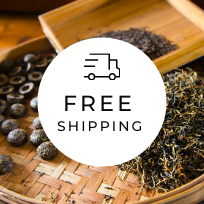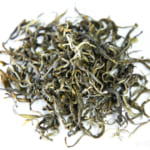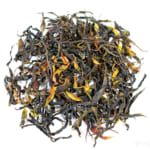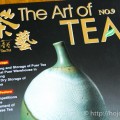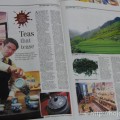- HOME >
- Teapot and Tea Equipment
Teapot and Tea Equipment

Majority of customers who visit my shop usually drink their tea without the addition of milk and sugar. However, there are quite a number of people who love to drink tea with milk. The tea book often explains that the milk proteins conjugate with the tea tannins and therefore the taste of black tea becomes …

- [2013.09.07]
- Charcoal does not always promise a nice cup of tea
Do you believe that charcoal treated water sometimes spoil the taste of tea?Some people place a piece of charcoal in water, hoping that it improves the taste of water. Charcoal has two functions when it is placed in water. Absorbs organic substance such as chlorine. Releases minerals Reduces Chlorine Content This is the most well-known …
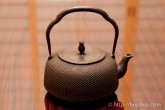
Many people are aware that a tetsubin effects the taste of water by making it smoother. But, do you know that different brands or different manufacturing method affects the taste remarkably too? I’ve carried out the following experiment to verify the effects of the taste between the different manufacturing processes. Kamayaki process that affects the …
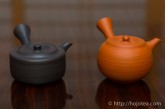
- [2013.08.14]
- Are not you choosing teapot just by color?
The colour and texture of the teapot varies a lot, where the same clay could turn red, purple or black based on just the firing technique. In addition, the use of different firing techniques not only changes the colour of clay, but also the taste and flavour of the tea when it is brewed. Therefore, …
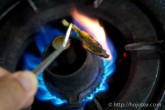
- [2013.07.29]
- Minerals that dominate the After Taste of tea
The after taste of tea is one of the most important criteria in selecting tea. To demonstrate that after taste can be influenced by the minerals that exist in tealeaves, I conducted an experiment to prove my point. Experiment: Burning tealeaves into ashes and use them to brew tea The aim of this experiment is …
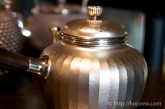
- [2013.06.14]
- Material that lighten the taste of tea
Do you know that the material used for teapots, cooking equipment or kettles could affect the taste of the tea or food you prepare? Some material enhance the taste There are materials that could increase the after taste of tea, for example: iron, silver, platinum, tin and gold. These materials can effectively increase after taste, …
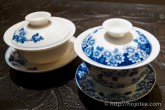
Have you ever wonder whether porcelain and Bone China ware can also affect the taste of tea? In fact, these two materials give different results in both body and aftertaste. Bone China and Porcelain noticeably changes the taste Many tea drinkers are aware that clay teapot can alter the taste and flavor of tea. However, …
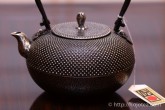
Tetsubin produced from different brands are casted from different metal combinations Tetsubin, literally means “iron kettle” in Japanese. However it is not necessary built from 100% of iron. In Japan, every cast iron maker has their own formula to blend the iron with other minerals. As a result, the taste differs significantly from one brand …
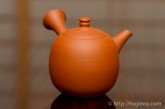
- [2013.03.25]
- Why is Zhuni/Shudei so famous?
Zhuni and red clay is of different meanings Zhuni is a famous name of clay. For teapot collectors in China and Japan, this name is very familiar. Both in Japanese and Chinese,it is written as 朱泥. Zhuni is the Chinese pronunciation, while it is called Shudei in Japanese. Both languages are referring to exactly …
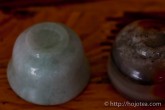
- [2013.03.22]
- Jade and the taste of tea
It is not only clay teapot or tetsubin that improves the taste of tea. Do you believe that jade or stone could also change the taste of tea? The Jade can improves the taste of tea We often heard that some materials can change the taste of tea, like with Zhuni or Zhisha. To many …
PAGE 3 OF 4
- Yunnan Chun Jian Green Tea from High Mountain Gardens
- Yunnan Chun Jian Green Tea is now available.This tea is made from naturally grown leaves harvested from high mountain gardens at 2100m above sea level. It has a rich, long-lasting lingering aftertaste, comparable to raw Pu-erh tea. Yunnan as a Distinctive Tea Growing Region Over the past 20 years, we have explored a wide range …
- Limited Loose Leaf Release of 2025 Da Xue Shan Wild Raw Pu-erh Tea
- We have released the 2025 loose-leaf version of Da Xue Shan Wild Raw Pu-erh Tea.This tea comes from wild tea trees that grow naturally in the high mountains of Yunnan Province, at elevations above 2000 meters. This year, we were only able to secure a small quantity for retail, and the current release is available …
Popular ArticleTeapot and Tea Equipment
 Do we have to use one tea pot for one tea?
Do we have to use one tea pot for one tea?- It often comes to the discussion whether or not we...
 Why is Zhuni/Shudei so famous?
Why is Zhuni/Shudei so famous?- Zhuni and red clay is of different meanings...
 2 types of clay used for Mumoyi Yaki in Sado Island
2 types of clay used for Mumoyi Yaki in Sado Island- In Japan, the pottery in Sado Island that uses natu...
 The effects of porcelain and bone china on the taste of tea
The effects of porcelain and bone china on the taste of tea- Have you ever wonder whether porcelain and Bone Chi...
 A Shiboridashi, the perfect alternative of a Gaiwan
A Shiboridashi, the perfect alternative of a Gaiwan- Shiboridashi is one of the tea brewing equipments...
 Selecting Suitable Clay for Japanese Green Tea
Selecting Suitable Clay for Japanese Green Tea- I would like to explain the points on how to choose...
 Tetsubin Handling Procedure
Tetsubin Handling Procedure- I made this video a few years ago in order to demonst...
 Grand Reopening of Gardens’ HOJO Store: Exciting Promotions Await!
Grand Reopening of Gardens’ HOJO Store: Exciting Promotions Await!- We are delighted to announce that HOJO tea shop at...
 Iga Natural Red Clay from the Hometown of Ninja
Iga Natural Red Clay from the Hometown of Ninja- I discovered very interesting clay in Iga, a place kn...
 Akitsu Mumyoi Clay from the Great Sado Mountain Range
Akitsu Mumyoi Clay from the Great Sado Mountain Range- Red clay from A largest Gold Mine in Japan Sado Isla...
Shop Info

Address:Lot No. T-215, 3rd Floor, The Gardens Mall, Mid Valley City, Lingkaran Syed Putra, 59200 Kuala Lumpur
Tel: +603-2287-4537
Business Hour: 10am to 10pm
Category
- New Arrival at HOJO Online Shop
- Featured Articles
- Newsletter
- Types of Tea
- Origin of Tea
- Teapot and Tea Equipment
- Tea Column
- How to enjoy tea
- Tea Processing
- How to choose quality tea
- Tea constituents and functional effect
- Safety of Tea
- Foods
- Tea Business Operation
- Hobby and Outdoor Activity
- Ranking of Tea
- Video
- FAQ
- Media Release
Profile

- AKIRA HOJO
- I invite you to experience my tea selections.I was born in Nagano, Japan. In university, I studied agricultural chemistry, and I have the master degree in food science. I worked in Japanese food industry for 10 years. I involved in R&D, QC and QA. As a factory manager, I implemented ISO9000 series and managed the factory.
- The Art of Tea Magazine
- We posted the article on “The Art of Tea Magazine No.9, the magazine is published in Taiwan. We featured some scientific view about the tetsubin
- New Straits Times
- The Malaysian National Newspaper, New Straits Times featured HOJO Tea on 17-Oct-2007.

